- Home
- Rabindranath Tagore
I Won't Let You Go: Selected Poems
I Won't Let You Go: Selected Poems Read online
RABINDRANATH TAGORE
I WON’T LET YOU GO: SELECTED POEMS
SECOND EXPANDED EDITION TRANSLATED BY
KETAKI KUSHARI DYSON
RABINDRANATH TAGORE (1861-1941) is India’s greatest modern poet and the most brilliant creative genius produced by the Indian Renaissance. As well as poetry, he wrote songs, stories and novels, plays, essays, memoirs and travelogues. He was both a restless innovator and a superb craftsman, and the Bengali language attained great beauty and power in his hands. He created his own genre of dance drama and is one of the most important visual artists of modern India. He won the Nobel Prize in Literature in 1913.
Tagore’s poetry has an impressive wholeness: a magnificent loving warmth, compassionate humanity, a delicate sensuousness, an intense sense of kinship with nature and a burning awareness of man’s place in the universe. He moves with effortless ease from the literal to the symbolic, from the part of the whole, from a tiny detail to the vast cosmos.
He is religious in the deepest sense, wavering between a faith that sustains the spirit in times of crisis – or fills it with energy and joy in times of happiness – and a profound questioning that can find no enduring answers. To him the earth is a vulnerable mother who clings to all her offspring, saying ‘I won’t let you go’ to the tiniest blade of grass that springs from her womb, but who is powerless to prevent the decay and death of her children.
‘Dyson has succeeded in these new translations in restoring a sense to the reader of Tagore’s real and remarkable genius as a poet. Short of learning Bengali one does not see how our sense of him as a poet could be bettered than it is by reading her versions… if any translation can put Tagore back on the map where he belongs, this one should do it’
– POETRY REVIEW
Rabindranath Tagore in America in 1916.
RABINDRANATH TAGORE
I Won’t Let You Go
SELECTED POEMS
NEW EXPANDED EDITION TRANSLATED BY
KETAKI KUSHARI DYSON
Dedicated to the tercentenary of the city of Calcutta
Rabindranath Tagore in 1875.
Contents
Title Page
Dedication
Preface to the Second Edition
Acknowledgements
List of Illustrations
Introduction to the First Edition
FROM Sandhyasangit (1882)
The Suicide of a Star
Invocation to Sorrow
FROM Prabhatsangit (1883)
Endless Death
FROM Kadi o Komal (1886)
Breasts (No. 2)
The Kiss
FROM Manasi (1890)
Desire
Death-dream
The Amatory Conversation of a Young Bengali Couple
FROM Sonar Tari (1894)
I Won’t Let You Go
Earth
On the Doctrine of Maya
Play
On Her Powerlessness
FROM Chitra (1896)
Farewell to Heaven
The Victorious Woman
The Year 1400
FROM Chaitali (1896)
Renunciation
An Ordinary Person
The Ferry
The Worker
Big Sister
The Mediatrix
On the Nature of Love
Putu
The Companion
A Scene of Affection
Against Meditative Knowledge
True Meditation
Drought
Hope Against Hope
FROM Kanika (1899)
Give Us Deeds, Not Words
Relationship of Convenience
Kinship Analysed
Too Good
Positive Proof
FROM Katha (1900)
The Repayment
The Realisation of Value
FROM Kahini (1900)
Dialogue between Karna and Kunti
FROM Kalpana (1900)
A Stressful Time
Dream
FROM Kshanika (1900)
What the Scriptures Say
Straightforward
FROM Naibedya (1901)
No. 88
No. 89
No. 90
FROM Smaran (1903)
No. 5
No. 14
FROM Shishu (1903)
Empathy
An Offer of Help
Hide-and-Seek
FROM Utsarga (1903-4, 1914)
No. 7
FROM Kheya (1906)
The Auspicious Moment
The Renunciation
FROM Gitanjali (1910)
No. 106
No. 107
No. 108
FROM Balaka (1916)
No. 6
No. 36
No. 39
FROM Palataka (1918)
Getting Lost
The Last Establishment
FROM Lipika (1922)
The Old House
One Day
Grief’s Ingratitude
The Question
FROM Shishu Bholanath (1922)
Sunday
Remembering
FROM Purabi (1925)
Gratitude
The Apprehension
The Skeleton
The Exchange
FROM Mahua (1929)
The Identity
Disappearance
FROM Punashcha (1932)
Kopai
By the Pond
Dwelling
Memory
The Boy
The Last Letter
Camellia
A Person
Writing a Letter
FROM Shesh Saptak (1935)
No. 1
No. 2
No. 3
No. 9
No. 11
No. 13
No. 22
No. 27
No. 29
No. 31
No. 46
FROM Bithika (1935)
The Indifferent One
FROM Patraput (1936)
No. 5
No. 7
No. 8
No. 11
FROM Shyamali (1936)
Dream
The Lost Mind
Tamarind Flower
The Nap
The Uncoupling
A Sudden Encounter
FROM Prantik (1938)
No. 5
No. 14
No. 18
FROM Akashpradip (1939)
The Dark Girl
Green Mangoes
FROM Nabajatak (1940)
Birthday
Romantic
FROM Sanai (1940)
Coming and Going
Impossible
FROM Rogashajyay (1940)
No. 22
No. 38
FROM Arogya (1941)
No. 7
No. 9
FROM Janmadine (1941)
No. 28
FROM Shesh Lekha (1941)
No. 5
No. 11
No. 13
No. 14
No. 15
Songs
1. O beggar, you’ve made me a beggar
2. I live with so little
3. I want, I want, I want with all my strength
4. So many unknowns you made me know
5. ‘Save me in danger!’ is never my prayer to you
6. Sunshine and shadows play hide-and-seek today
7. A soft wind stirs the white sail without a spot
8. Clouds have gathered on clouds
9. Where’s the light? Where, where is the light?
10. It is a stormy night
11
. O master singer, how marvellously you sing!
12. No! It won’t do to evade me like this!
13. If I don’t see you, Lord, in this life
14. My eyes keep vigil for you, Lord
15. My heart’s ravisher
16. For how many aeons
17. The song I came to sing here stays unsung
18. That is why
19. All life’s acts of worship
20. She won’t take no for an answer
21. The dawn in which you called me
22. When my pain escorts me to your door
23. That fire of music you ignited in me
24. Not just your words
25. There’s no end to it
26. I shall not beguile you with my beauty
27. I couldn’t keep them in the golden cage
28. A fire of flowers has hit the blue horizon
29. Tonight the fire-flames burn in a million stars
30. Lest he goes without telling me
31. Come to the kadamba grove, under the shady trees
32. Lost to myself
33. So many times I’ve been along this trail
34. Shiuli flower! Shiuli flower!
35. The two of us had swung in the forest that day
36. The moon’s laughter’s dam has burst
37. House-bound men, open your doors
38. Where does the road end?
39. In the dead of night you brought me devastation
40. You gave me the monsoon’s first kadamba flower
41. Take the last song’s diminuendo with you
Notes
Glossary
Biographical note
Copyright
Preface to the Second Edition
As I sit down to write a preface to this new edition of work first undertaken twenty years ago, I am thinking of Professor Nemaisadhan Bose, at that time the Vice-Chancellor of Visvabharati, who had persuaded me to undertake the project. He is no longer with us. How he would have loved to hear that this book was receiving a new, enlarged edition! When he had first asked me to translate a selection of Tagore’s poems into English, I had accepted the task more as a challenge than anything else, and not without a degree of trepidation. In the end doing the work proved to be a rewarding and absorbing experience. To select poems for translation I had to immerse myself in Tagore’s poetic corpus for an extended period, and such sustained immersion in the work of a great poet is always a reward in itself. The process of transferring the poetry to the English language was both a pleasurable re-creative activity and an educative experience.
My remit, as I understood it, was to take Tagore’s poetry to those who could not access him in the original language, but could read him in English, and make them see that he was a great poet. Over the years so many – both Westerners and non-Bengali-speaking Indians – have thanked me for revealing to them Tagore’s greatness as a poet that going by such feedback, a measure of success may indeed be claimed for the translation project envisioned and initiated by the late Professor Nemaisadhan Bose. Personally for me, it has led to further important work in Tagore studies and also in literary translation. I have also received invitations to seminars, conferences, and workshops, and requests to write on translation issues and review works of translation. Besides many such articles in Bengali and English scattered in magazines, I have also prefixed prefaces to two other subsequent works of translation, explaining the rationale of my work methods.
In the 1950s the work of the great Bengali poet-translators of the post-Tagore era impacted on my generation. They were my inspiration in my first serious work of poetry translation, done in the mid-sixties, when I translated examples of Anglo-Saxon poetry into alliterative Bengali half-lines. The first fruits of those efforts were published with a preface in Visvabharati Patrika in 1971, and years later a little anthology of eleven pieces was published (Anglo-Saxon Kabita, Navana, Calcutta, 1987). My thinking on translation issues has developed from those beginnings. Those who are interested to gain a quick overview of the conceptual framework within which I currently translate may look up a short article in English available on the Internet, based on a presentation I made at a conference at the University of Hyderabad in January 2009.1 The Tagore translation project has indeed been fruitful in my overall literary life, generating opportunities for new work.
I would like to say a few words on the new translations incorporated in the present edition. The two poems from Nabajatak (1940) were published in a special issue of the Visva-bharati Quarterly commemorating Tagore’s fiftieth death anniversary2 and were translated at the request of Professor Shyamal Kumar Sarkar, who was the journal’s editor at that time. The poem ‘The Year 1400’ from Chitra (1896) was translated for an event to celebrate the advent of the year 1400 according to the Bengali calendar. This event, jointly organised in 1993 by the Nehru Centre of the High Commission of India in London and the Tagore Centre of London, was held in the premises of the Nehru Centre, and I read out the poem on that occasion. It was subsequently published in the web magazine Parabaas (www.parabaas.com). The dramatic poem ‘Dialogue between Karna and Kunti’, from the collection Kahini (1900), was translated in the spring of 2000 at the request of Bithika Raha of London, who choreographed a dance performance to accompany the words. It was later published in the above-mentioned web magazine Parabaas. The background of this poem is elucidated in the Notes section.
The three poems from Gitanjali (1910) included in the poems section of this edition have been done specially for this edition. One Bengali critic had lamented the absence of any patriotic song in the first edition of this book, and I have always wished to make amends. Rummaging for suitable samples of patriotic sentiment in Tagore’s word-hoard, I felt that I could do no better than translate three highly regarded poems from the Bengali Gitanjali, nos. 106, 107, and 108, but decided that they had to be presented as poems rather than as songs. Let me explain why.
No. 106 was set to music by Tagore, but only the first, second, and final stanzas were admitted to the ‘Swadesh’ or patriotic section of the definitive collection of his songs, the Gitabitan, and I did not wish to present this great poem in a truncated form. No. 108 was never set to music by Tagore himself, but another musician, with Tagore’s permission, set it to music and recorded it. In that incarnation the song is familiar enough to Bengalis, and in my growing years I have heard it too, broadcast over the radioz, but this lyric has never been included in the Gitabitan and is not technically a ‘Tagore song’, which is defined as a piece in which both the words and the melody are compositions of Tagore’s. No. 107 is indeed a song and is included in the Gitabitan, but in the section marked as ‘Puja’ or ‘worship’, not under the banner of patriotism. This cluster of poems written in the first week of July 1910 may be regarded as companion pieces revealing some of the deepest layers of Tagore’s thinking about his homeland. First he elaborates and praises what he regards as his country’s greatest strength and most precious heritage: its embodiment of multiracial, multicultural unity-in-diversity, offering a paradigm for the future development of all humanity.
No. 106 of Gitanjali contains, in a highly rhetorical and embellished form, that message of universal humanism – patriotic pride transcending itself and becoming an expression of transnational humanistic aspiration – that many international scholars of Tagore are now eager to claim and emphasise as one of the noblest intellectual heritages that Tagore has left behind for posterity. As we know, some years later, with the First World War revealing its horrors, Tagore would move away quite decisively from the European model of the nation-state, based on competition, aggression, and self-aggrandisement. He would reject everything that was divisive. Even in this mainly celebratory poem, no. 106 of Gitanjali, the perils of social division are not forgotten. The poem is followed by a searing acknowledgement of his country’s caste-divided socioeconomic structure, with its large underclass (no. 107), and a dire warning about the future if this state of affairs is not
rectified (no. 108). Though a song-structure is plain in each poem, especially in an emphatic use of the refrain, these poems are not really in the same category as the more tender, God-yearning songs of Gitanjali which are clearly wrung from his personal bereavements, but are more in the nature of radical social discourses challenging orthodoxies. No. 107 resonates with no. 119 (not translated here), in which God is located where the manual workers are, labouring in the fields, digging roads, come sun, come rain.
We have to remember that these poems were written long before Gandhi started his struggle for the outcastes, calling them ‘Harijans’ (‘God’s people’). When Tagore was writing these poems, Gandhi was still in South Africa. It is in the modality of social discourse that such poems have been formative influences on the consciousness of Bengalis growing up in the twentieth century. They have acted as seminal texts, showing the poet-songmaker, the patriot, and the angry prophet combined in the most creative way. Together with other works in his corpus, such as his drama Chandalika (1933), re-shaped as a dance-drama in 1938, emphatically rejecting untouchability and proclaiming the common humanity of all classes of society, such texts have left permanent marks on the intellectual and political life of Bengalis.

 Selected Poems
Selected Poems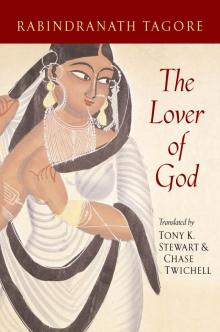 The Lover of God
The Lover of God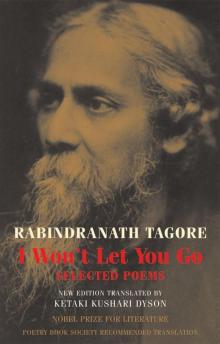 I Won't Let You Go: Selected Poems
I Won't Let You Go: Selected Poems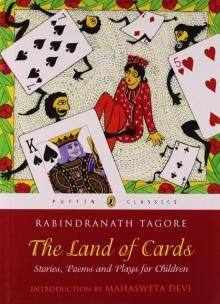 The Land of Cards: Stories, Poems, and Plays for Children
The Land of Cards: Stories, Poems, and Plays for Children The Tagore Omnibus, Volume One
The Tagore Omnibus, Volume One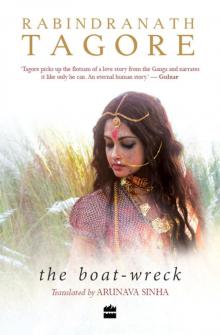 The Boat-wreck
The Boat-wreck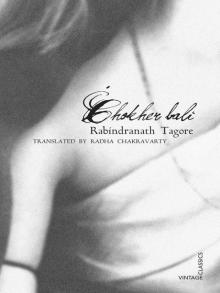 Chokher Bali
Chokher Bali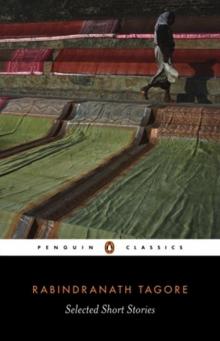 Selected Short Stories
Selected Short Stories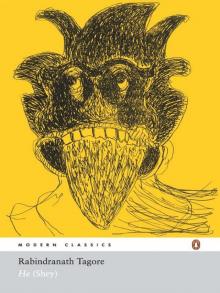 He (Shey)
He (Shey)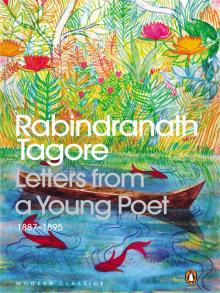 Letters From a Young Poet 1887 1895
Letters From a Young Poet 1887 1895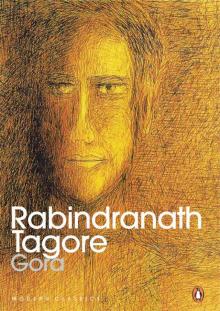 Gora
Gora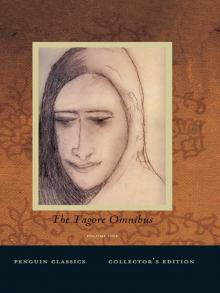 Tagore Omnibus, Volume 1
Tagore Omnibus, Volume 1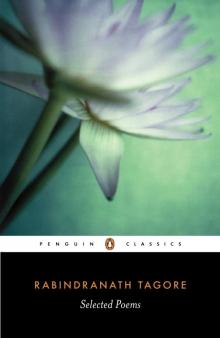 Selected Poems (Tagore, Rabindranath)
Selected Poems (Tagore, Rabindranath)